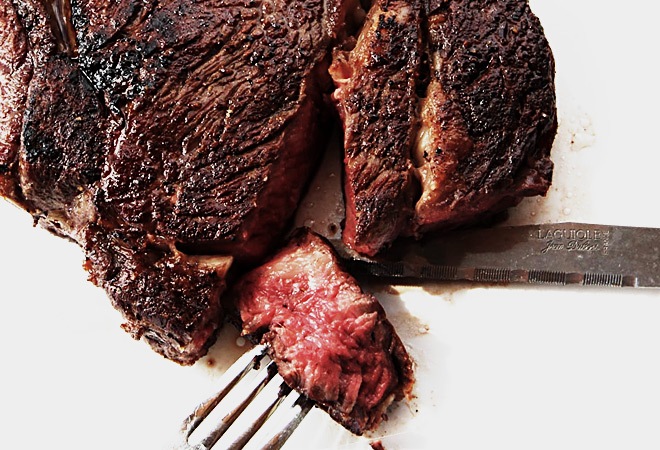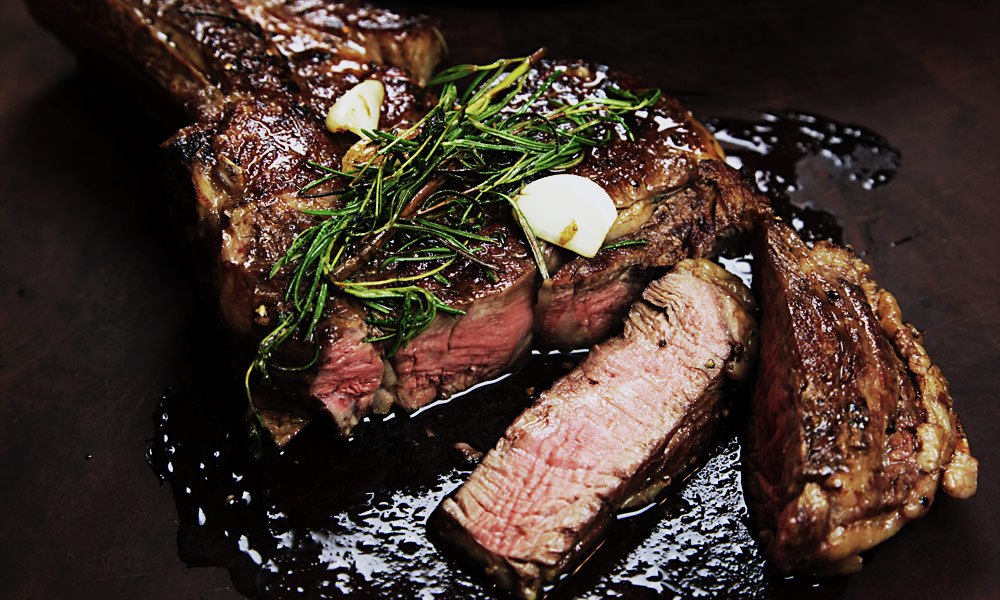At this point, we’ve heard—probably literally—a million different ways to grill a steak. Char-grilled, flat top, cast-iron skillet… Hell, we’ve even heard about steak cooked in water. But a “new” method that’s popped up recently and making waves is the reverse sear. We use new in quotes because it actually isn’t new at all, but it is experiencing a resurgence with everyone from DIY kitchen kings to some of the best chefs in the world. Frankly, we’re glad everyone is hopping on the reverse sear bandwagon, and while it sounds a little odd at first, the process does make a lot of sense. And the results are undeniable.

What is a “Reverse Sear”?
For ages, the undisputed king of steak cooking methodology revolved around the following: Take your steak, sear it evenly on both sides (and edges, if it’s thick enough), and then finish it in the oven. That’s an excellent way to cook a steak, and one that ensures perfection just about every time you do it.
The reverse sear, however, flips the script on the traditional sear and instead starts the cooking process in the oven, and then finishes it in the skillet. You season your steak as you ordinarily would, then throw it in the oven at a low temperature for a long time (depending on thickness, you can figure something like 250 degrees until the internal temperature is between 115 and 125 degrees), let it rest on the cutting board for a few minutes, and then finish it in the skillet.
We know, we know… It sounds weird. But, it is, in our humble opinion, the by-far best way to cook a steak we’ve ever experienced—for a couple reasons.
Why Reverse Sear?
The first reason is that the surface of the steak is a lot hotter than it normally would be at room temperature, which makes it a lot easier to get a “harder” sear on it in a shorter amount of time. As most people will tell you, that crust of seasonings mixed with the soft, buttery, tender interior meat are what make seared steaks so special. Reverse searing makes that crust better than ever.
Another reason is raw steaks that have been chilled or frozen for a significant amount of time will “weep” and release moisture/condensation. Unless wiped thoroughly that moisture will wreak havoc on you when you finally drop the steak in your white hot, oiled cast-iron pan.
By allowing the steak time to cook in the oven for a while, that moisture is removed from the surface, meaning a lot less spatter and mess.
Finally, because the steak has already been rested and allowed to cook from residual heat before it hits the skillet, it’s perfectly okay to remove it straight from the finishing sear and start carving nice and hot. It means no more 10-minute wait time for lukewarm steak, which is a huge, huge plus for us.

What, Exactly Makes Reverse Searing So Special?
We already talked about the crispier seasoning sear, but is that really worth all the extra cook time? Eh, maybe not.
But one look at the inside and you’ll understand exactly what makes reverse searing so special.
So, when you cook a steak—whether you’re searing it, char-grilling it, tossing it on the flat top, whatever—there’s a bull’s eye effect that occurs depending on how well done the meat is cooked. You’ll have either the crust or the char on the edges, followed by a small ring of well done meat, then a small ring of medium well meat, and then finally, a small portion of that perfect medium meat that everyone loves so much. The problem with this is that, when you look at it statistically, only about a third of your steak is actually medium. The rest is varying between medium well, and well.
When you reverse sear, there is no bull’s eye. There’s no gradient between well done and medium. All there is, really, is that deliciously seasoned crunchy crust, and an inside that’s medium all the way through, from edge to center. Right below the crunchy crust lies that buttery tender, perfectly done pink meat that everyone craves so much.




